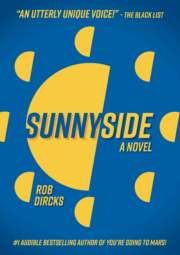Cooperative Publishing: Writers Taking Charge of Their Publishing Careers
By Diana Pharaoh Francis
Writers can have great success when indie publishing, but many feel underqualified or underprepared to handle all the dimensions of self-publishing. I did. While there are numerous specialists available to help you navigate the journey, they can get expensive, and the process can be overwhelming.
Enter another option: A publishing co-op.
The purpose of a co-op is for writers to gain control of their careers through mutually supportive independent publishing. By pooling their strengths and essentially trading services, skills, and knowledge to minimize out-of-pocket expenses, writers can produce a professional product while maintaining creative control of the process and the product.
A number of years ago, I’d become unhappy with traditional publishing. I was invited to join Book View Café (BVC), a publishing co-op founded by genre authors with two primary goals. First, to pool their varied skills for mutual self-publishing success while retaining all rights to their own work. Second, to establish an electronic storefront in case the main ebook distribution outlets lost viability for whatever reason. This ensured that the authors would still have a sales outlet for their books.
I was eager to get on board. I looked forward to the built-in community and knowledge base that came from a diverse membership, many of whom had very successful careers in traditional publishing. Their expertise went beyond the general skills surrounding independent publishing; they were a walking library of information, both historical and current. Not only could they advise me on my choices, but they could explain their rationales in the context of the industry and my career goals.
Let me pause here and say that the BVC model is not the only publishing co-op model available, and it may not be the best. It has thrived for fifteen years and has taught me a lot. My goal here is to give you a sense of what a publishing co-op can offer along with some advantages and disadvantages to joining one.
When contemplating a co-op, consider what you have to offer and what your fellow members can do. Will your specific needs be met? Learn the specific expectations for your contributions, what the publishing process is for the co-op, how disagreements are resolved, what the costs of membership are, what benefits you can expect to have, and how members are selected.
Additionally, you will want to determine if you can use services outside the co-op (your preferred cover artist, for instance) and the revenue structure. If your co-op has an online bookstore, you’ll also want to ensure that you can sell books on other platforms. To build readership, you need to sell as widely as possible.
A successful co-op will have product standards. Your brand is at stake. You’ll want to know how those quality metrics are applied and the process for making sure that a work published by the co-op meets those standards. Do members vote? Who has the last word on whether a book is ready for publication?
At BVC, we generally have the opportunity to offer opinions at each stage of the publication process—cover, back cover copy, layout, etc. A member can elect not to use co-op members for completing that work but is still required to have one member read the book. All e-books are posted in our forums for comment and review. Ultimately, however, the writer has the final decision on all aspects of the work. But rest assured that the involvement of so many professionals engaged in your success tends to lift the quality of everybody’s books.
A co-op publisher can nominate books for awards, submit publishing schedules to trade magazines, get discounts for services, and so on. You have more authority and name recognition within the industry than you would on your own. We also get more interest from promotional outlets because we are a publisher and not individual self-publishing authors.
A co-op will likely charge yearly dues, as well as collect a percentage of sales made through its bookstore. Ideally, members will make a higher royalty percentage per book through the co-op bookstore than via other platforms, which is a huge benefit. From the funds it collects, the co-op pays for building and maintaining its website, consultants for needs that members can’t provide, purchasing bulk ISBNs, and other associated costs.
On top of the other advantages I’ve mentioned, the value of the promotional reach when co-op members promote each other’s books cannot be overstated. As a group, we promote on the co-op’s social media platforms, which means that readers will spread the word. But with all our constituent authors also sharing on their networks, the word–of-mouth reach increases exponentially.
If all this sounds like a lot, let me tell you that it is, and it takes hard work and effort by all the members to keep the system running. A willingness to commit hours of volunteer service is necessary, and there will be some hero-members who carry much heavier loads than others. At times, some members will be unable to shoulder the level of work they normally would otherwise. A healthy co-op has the ability to adjust based on its members’ current situations.
Another significant difficulty to anticipate is when members disagree and cannot solve their differences. Preplanning for what to do in those situations is critical. Everyone should agree on the process for conflict resolution in advance.
When I left traditional publishing, I was nervous about my ability to successfully manage all the tasks of publishing. Being part of the BVC co-op has given me the tools, knowledge, and community support I needed to navigate indie publishing and grow my career. I invite you to investigate the benefits of co-op publishing and see if it could work for you.
 Diana Pharaoh Francis is the bestselling writer of fantastical, adventurous, and often romantic fiction. She holds a Ph.D. in Victorian literature, and is owned by a corgi, a mini blue heeler, and a blue-eyed corgi mix. She spends her time gardening, airbrush painting, herding children, and avoiding housework.
Diana Pharaoh Francis is the bestselling writer of fantastical, adventurous, and often romantic fiction. She holds a Ph.D. in Victorian literature, and is owned by a corgi, a mini blue heeler, and a blue-eyed corgi mix. She spends her time gardening, airbrush painting, herding children, and avoiding housework.


